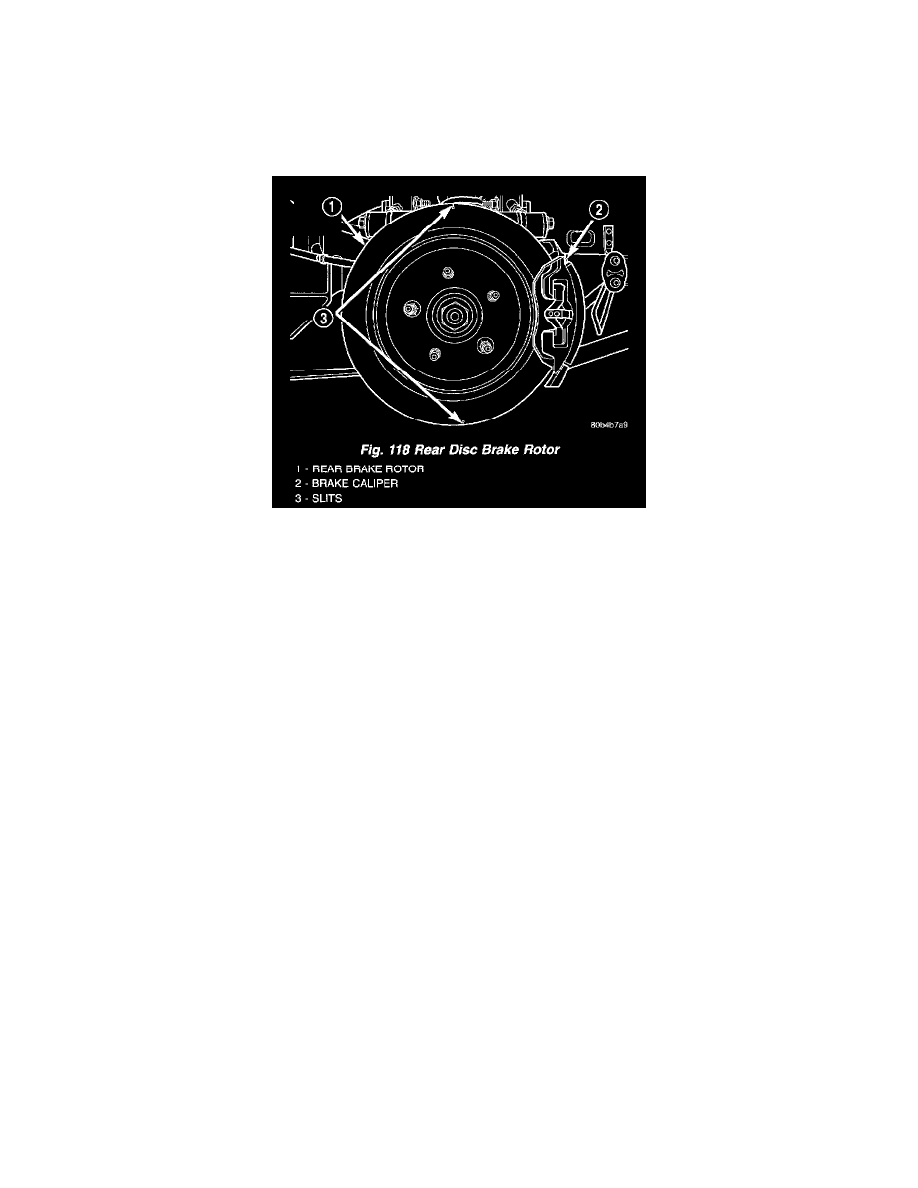Prowler V6-3.5L VIN G (2002)

Brake Rotor/Disc: Testing and Inspection
DIAGNOSIS AND TESTING - BRAKE ROTOR
CAUTION: The rear brake rotor used on this vehicle cannot be machined. If when diagnosing the rear rotor for thickness variation and runout it is
found not to meet the required specifications, the rotor must be replaced. No attempt should ever be made to machine the rear brake rotor.
Any servicing of the rotor requires extreme care to maintain the rotor to within service tolerances to ensure proper brake action.
The rear brake rotor is made of aluminum silica carbide alloy and must not be machined. The rear brake rotor has two slits cut into the braking
surface. They are there to isolate rear brake noise. These should be inspected to make sure they are clear of debris.
Before refinishing or refacing a front brake rotor, the rotor should be checked and inspected for the following conditions:
Braking surface scoring, rust, impregnation of lining material and worn ridges.
Excessive rotor lateral runout or wobble.
Thickness variation in braking surface of the rotor (Parallelism).
Dishing or distortion in braking surface of the rotor (Flatness).
If a vehicle has not been driven for a period of time, the rotors will rust in the area not covered by the brake lining and cause noise and chatter when
the brakes are applied.
Excessive wear and scoring of the rotor can cause temporary improper lining contact if ridges are not removed from braking surface of rotor before
installation of new brake shoes.
Some discoloration and/or wear of the rotor surface is normal and does not require resurfacing when linings are replaced.
Excessive runout or wobble in a rotor can increase pedal travel due to piston knock-back. This will also increase guide pin bushing wear due to the
tendency of the caliper to follow rotor wobble.
Thickness variation in a rotor can also result in pedal pulsation, chatter and surge due to variation in brake output. This can also be caused by
excessive runout in the rotor and/or the hub.
Dishing or distortion can be caused by extreme heat and abuse of the brakes.
CHECKING ROTOR THICKNESS AND RUNOUT
NOTE: The procedure for checking rotor runout and thickness is the same for the front and rear rotor. If there is a specification difference between
the front and rear rotor it will be designated as such in the specifications of the following procedure.
On-vehicle rotor runout is the combination of the individual runout of the hub face and the runout of the rotor. (The hub and rotor runout readings are
separable). To measure runout on the vehicle use the following procedure.
1. Remove the tire and wheel from the hub.
